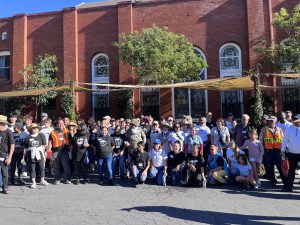Learn More
Active Businesses
Metadata
Variable Definitions:
Total Active Businesses: The number of businesses that are registered with the LA Office of Finance as operational for at least half of the calendar year
Businesses Started: The number of businesses that registered their first business activity with the LA Office of Finance within the calendar year
Businesses Stopped: The number of businesses that reported ceasing all business activity to the LA Office of Finance within the calendar year
Source:
City of Los Angeles Office of Finance
Years Available:
2010-2024
Methodology Note:
The original data comes at the point level. Our team geocoded the locations to generate X/Y coordinates, then spatial joined each point to 2020 Census Tracts.
Why are these variables important to measure?
Businesses can be categorized into various sectors, including manufacturing, banking, retail, and more, based on the items they produce. Each sector contributes uniquely to the local economy by influencing employment, commerce, and social dynamics. These variables provide insight into the overall economic vitality and stability of a community.
Undeniably, the business sector plays a crucial role in the health of a local economy, primarily through job creation and economic growth. A significant number of active businesses provide employment opportunities and generate tax revenues which help finance new enterprises and enhance public services. In contrast, a high volume of business closures can indicate economic issues such as rising unemployment and financial instability within a community. High startup rates indicate significant opportunities for new businesses, while high closure rates may point to underlying challenges such as economic volatility or insufficient support systems.
To remain competitive and open, businesses require strategies for transformation, reconfiguration, entrepreneurship, and innovation. Key factors that contribute to business sustainability include manageable rent and operational expenses, federal support through loans and financial aid programs, and robust community support. Effective local government initiatives, such as streamlined permitting, regulations, and incentives, are vital in creating a conducive environment for business success. Active businesses within a community provide more than just goods and services—they also create spaces where residents can connect, engage, and build community ties. These “third spaces,” such as bookstores, gyms, restaurants, and malls, foster social interaction beyond one’s immediate household or workplace and encourage social cohesion. It is important to note that this dataset only includes those that have officially completed the necessary legal and administrative procedures required by the local, state, or federal government to operate. Unregistered street vendors are not included in this dataset, even though Los Angeles sees significant contributions to the local economy from such community members.
Written by Nicole Ouyang
Citation:
The Economic Times (2023). What is a business? The Economic Times. https://economictimes.indiatimes.com/definition/business
Klein, A & Smith, E. (2021). Explaining the economic impact of covid 19: Core industries and the Hispanic workforce. Brookings. https://www.brookings.edu/research/explaining-the-economic-impact-of-covid-19-core-industries-and-the-hispanic-workforce/
United States Census Bureau (2021). The Majority of U.S. Businesses Have Fewer Than Five Employees. United States Census Bureau. https://www.census.gov/library/stories/2021/01/what-is-a-small-business.htmlRelated Data Stories

The Book Truck: Delivering Literacy in Southern California
Why Do Some People Read? For children in some communities, books and reading are omnipresent. Reading begins as amusement and entertainment and grows into a



